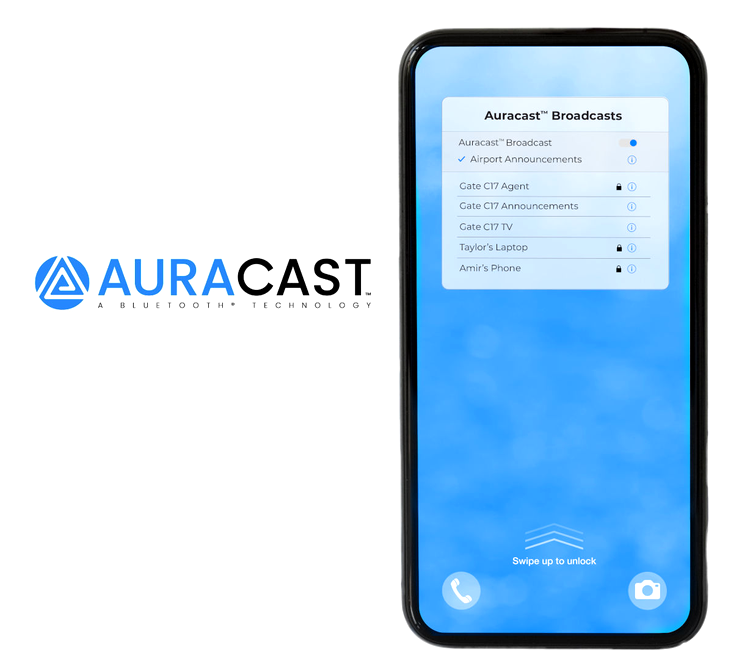Google has already announced full support in Android 13 for Bluetooth LE audio connections, the wireless standard originally developed to make it easier for low-power devices to operate as efficiently as possible while minimizing standby power consumption.
The problem with the Bluetooth LE standard is that the optimizations made to make possible the lowest possible power consumption even during data transfers comes at a major penalty on available bandwidth. Thus, in order to make it possible to play audio at an acceptable level of quality via Bluetooth LE, it was necessary to implement much more efficient formats for audio compression.
The LE Audio standard was announced by the Bluetooth SIG as early as 2020 as part of the Bluetooth 5.2 specification set. Prior to version 5.2, Bluetooth LE was used strictly for data transfer and did not allow audio transmission. Key features of LE Audio include lower power consumption, Multi-Stream Audio support for an enhanced audio experience on true-wireless headsets, the ability to stream one or more audio streams to an unlimited number of audio devices, and more.
Changes to facilitate audio connections have been added in Android 13 in the form of a new API, with LC3 (Low Complexity Communications Codec), an audio compression format optimised for low power consumption and high listening quality, even at severely limited bitrates, at its core.
Two years later, the Bluetooth SIG announces the finalization of the Bluetooth LE specification set, giving wireless headset manufacturers the green light to bring out a new generation of Bluetooth accessories, with enough improvements to justify the eventual replacement of products already in use by users.
According to the Bluetooth SIG, the new Bluetooth LE Audio standard improves the wireless performance of devices while substantially reducing power consumption. In addition, the new standard adds support for hearing aids and forms the basis for Auracast audio transmissions, a new Bluetooth capability.
To take advantage of the new Bluetooth LE Audio capabilities you’ll need a device updated to at least Android version 13. Presumably Apple will also add these capabilities via iOS updates.
Future Bluetooth LE Audio compatible devices will support 48KHz playback with 32-bit precision, using sample rates between 16Kbps and 425Kbps. At the same time, the minimum connection latency is specified at 20-30 ms, even lower than for conventional Bluetooth connections.
Another argument in favour of the Bluetooth LE Audio standard would be the optimisations made for handling connections with weak signals, or at the edge of range. By preventing sudden interruption of the audio stream, devices will be able to “negotiate” the right bitrate for the quality of the connection, so that audio fidelity will gradually decrease, avoiding as far as possible interruption of listening. The technology is called Isochronous channels and allows packets received “too late” to be discarded, improving the audio experience.
Another Bluetooth LE Audio innovation is the ability to transmit an unlimited number of audio streams to devices within range of the connection. These can be synchronised to play the same audio stream at the same time, or used privately. For example, to listen via Bluetooth headset to the translation given at an audience event
As for Auracast audio support, it allows for example to listen via bluetooth to the TV on the terrace where you are having lunch, without disturbing the people around you.
Bluetooth LE Audio certified devices will probably not be widely available until next year, and it may be some time before we see widespread adoption of the new technology.


 What’s happening with AI? Researcher explains why you can look forward to more creative NPCs, competition for ChatGPT and hot dog tomatoes
What’s happening with AI? Researcher explains why you can look forward to more creative NPCs, competition for ChatGPT and hot dog tomatoes Cowboy launches new on-demand service: That’s what’s inside
Cowboy launches new on-demand service: That’s what’s inside The new 4K Fire TV stick is now brutally reduced and transforms your old television into a smart TV
The new 4K Fire TV stick is now brutally reduced and transforms your old television into a smart TV The best mouse I’ve ever had, convinces me for gaming, work and home office and is different than all its predecessors!
The best mouse I’ve ever had, convinces me for gaming, work and home office and is different than all its predecessors! The first smart glasses suitable for everyday use that you can buy
The first smart glasses suitable for everyday use that you can buy